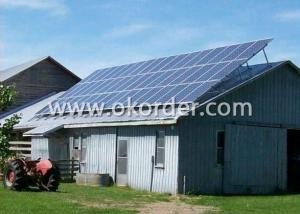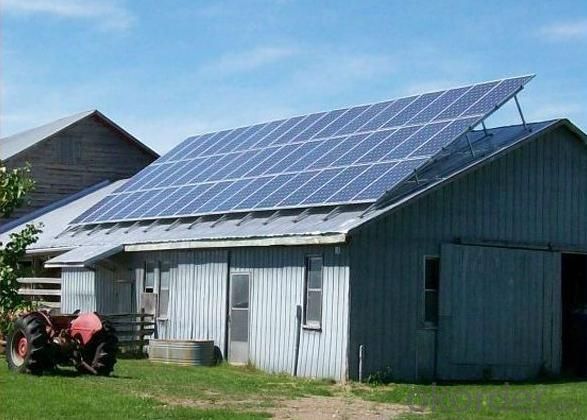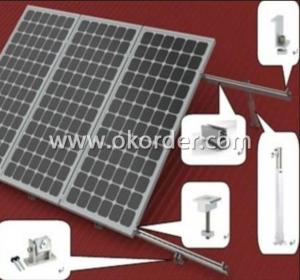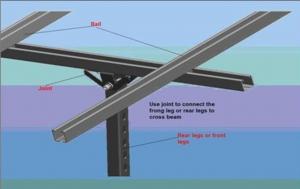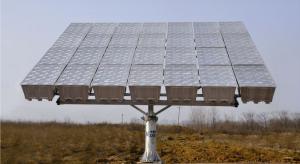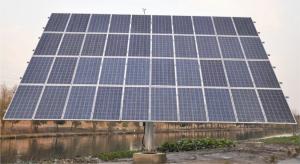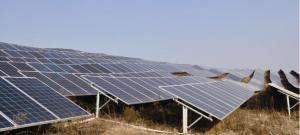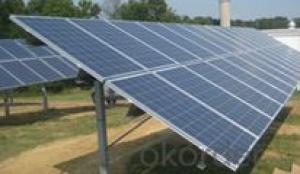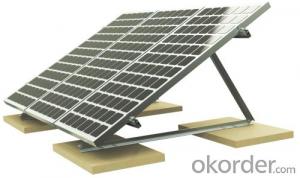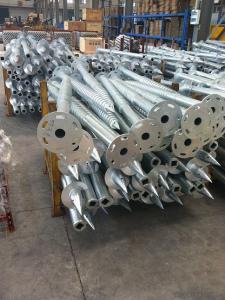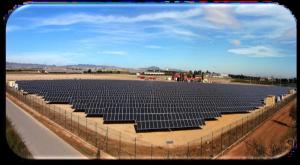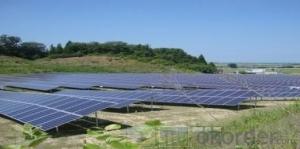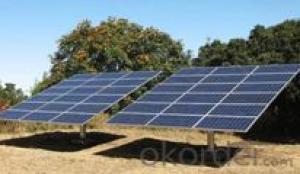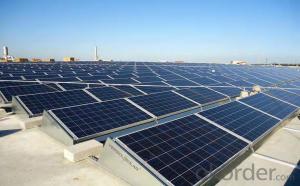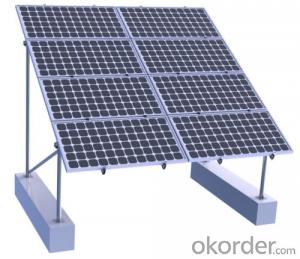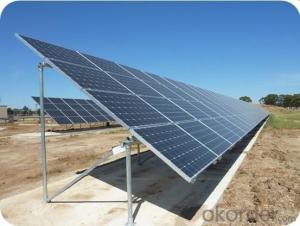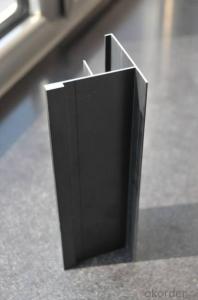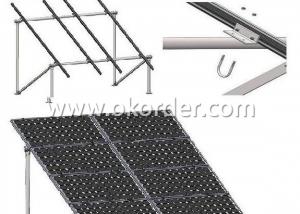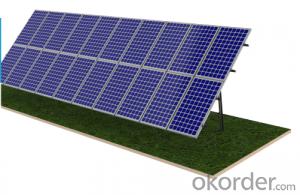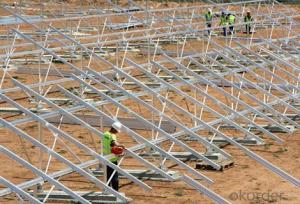Solar Mounting System Market Ground Based Mounting System
- Loading Port:
- Shanghai Port
- Payment Terms:
- TT or LC
- Min Order Qty:
- 10watts set
- Supply Capability:
- 1-1000000watts/month set/month
OKorder Service Pledge
OKorder Financial Service
You Might Also Like
Packaging & Delivery of the Ground Based Mounting Syetem
Packaging Detail: carton box, wooden pallet
Delivery Detail: 15 days on PO
Specifications of the Ground Based Mounting Syetem
Installation Site | Open terrain – ground mount |
Installation Angle | 10~45 degrees |
Wind Load | 65m/s |
Snow Load | 1.3KN/m2 |
PV Modules | Framed, unframed |
Module Orientation | Portrait or landscape |
Ground Clearance | 300~800mm |
Standards | AS/NZS 1170 DIN 1055 JIS C 8955: 2011 International Building Code IBC 2009 California Building Code CBC 2010 |
Profile Materials | Extruded aluminum /Hop-dip Galvanized Steel (Q235) |
Fasten Part | Totally anodized (6005-T5) |
Small Components | Stainless steel (SUS304) |
Color | Silvery or according to customer requirements |
Post Driving Depth | 1500~2500mm |
Warranty | 10years |
Advantages of the Ground Based Mounting Syetem
1. Quick Installation: Quick assembly with minimal components, high degree of pre-assembly minimizes costly labor, eliminates the necessity of onsite cutting or drilling.
2. Versatile Mechanical Innovation: Flexible module layout, can be applied to both vertical and landscape. Using the custom engineered U-shaped posts, GT II can be applied to various soil conditions, and the U-shaped beam maximizes the strength of whole structure.
3. Less is More: Single supporting arm and double supporting arms are optional, its efficient structural design minimizes material usage making it one costly solution.
4. Quality Guaranteed: All aluminum and stainless steel, strict QC offers more reliable solutions with quite long life span.
The details of the Ground Based Mounting Syetem
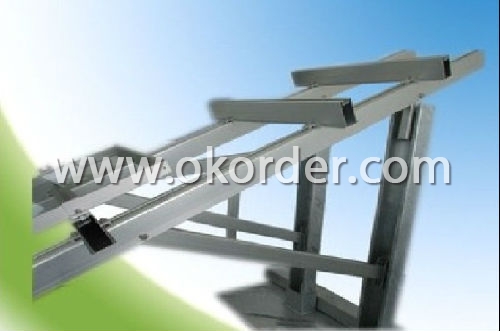

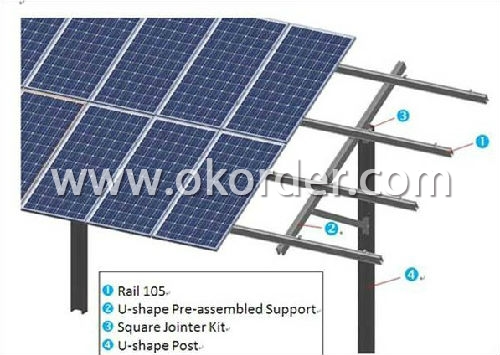
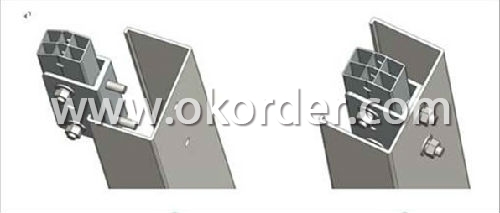
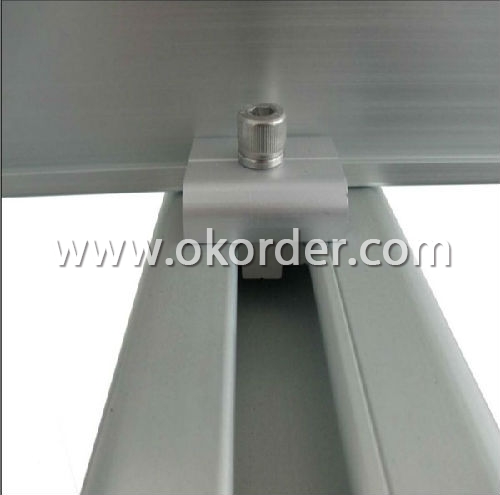
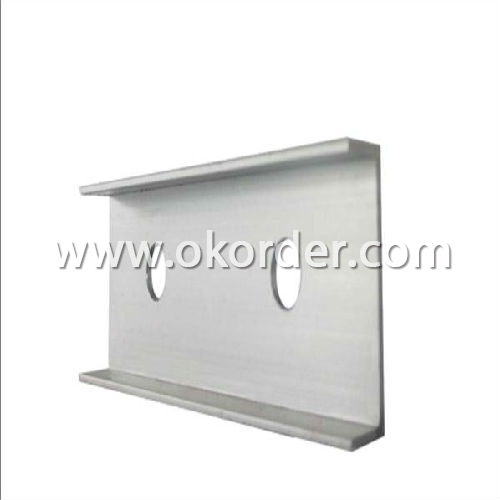
The applications of the Ground Based Mounting Syetem

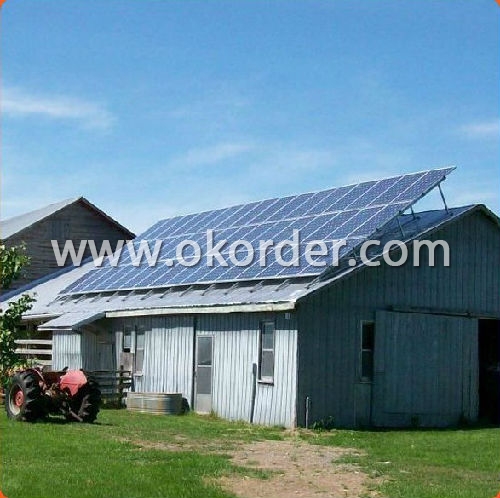
- Q: Are there any specific requirements for installing a solar mounting system on a rooftop with HVAC units?
- Yes, there are specific requirements for installing a solar mounting system on a rooftop with HVAC units. These requirements typically include ensuring that the solar panels and mounting structure do not obstruct or interfere with the HVAC units' functionality and maintenance access. Additionally, proper engineering and design considerations must be taken into account to ensure that the added weight of the solar system does not exceed the rooftop's load-bearing capacity. It is crucial to consult with a professional solar installer and obtain necessary permits to meet local building codes and regulations.
- Q: Can a solar mounting system be installed in a high-wind or hurricane-prone area?
- Yes, a solar mounting system can be installed in a high-wind or hurricane-prone area. However, it is crucial to ensure that the mounting system is designed and engineered to withstand the specific wind loads and conditions of the area. Additionally, proper installation techniques, including the use of reinforced anchors and secure attachments, are essential for the stability and safety of the system in such environments.
- Q: Can solar mounting systems be used for commercial-scale installations?
- Yes, solar mounting systems can definitely be used for commercial-scale installations. In fact, they are commonly used in such applications. Solar mounting systems provide the necessary support and stability for large arrays of solar panels, ensuring optimal positioning and efficient energy generation. These systems are designed to withstand various weather conditions and are adjustable to accommodate different roof or ground installations.
- Q: Are there any specific requirements for installing a solar mounting system on a rooftop with lightning protection systems?
- Yes, there are specific requirements for installing a solar mounting system on a rooftop with lightning protection systems. The solar mounting system should be designed and installed in accordance with the National Electrical Code (NEC) and relevant local building codes. Additionally, it is important to ensure that the lightning protection system and the solar mounting system are properly integrated to mitigate the risk of damage from lightning strikes.
- Q: Are there different types of solar mounting systems?
- Yes, there are different types of solar mounting systems. Some common types include roof-mounted, ground-mounted, and pole-mounted systems. Each type has its own advantages and considerations, depending on factors such as available space, orientation, and local regulations.
- Q: Can a solar mounting system be used in areas with solar co-op initiatives?
- Yes, a solar mounting system can definitely be used in areas with solar co-op initiatives. In fact, solar mounting systems are an essential component of solar panel installations, regardless of whether they are being implemented individually or as part of a cooperative initiative. These systems are designed to securely hold and position solar panels, allowing for optimal exposure to sunlight and maximum energy generation. Therefore, they can be used effectively in areas where solar co-op initiatives are actively promoting the adoption of solar energy solutions.
- Q: What is the expected increase in energy efficiency with a solar mounting system?
- The expected increase in energy efficiency with a solar mounting system can vary depending on factors such as the type and design of the system, location, and environmental conditions. However, on average, a well-designed solar mounting system can increase energy efficiency by 10% to 20% by optimizing the angle and orientation of the solar panels, maximizing sunlight exposure, and minimizing shading or obstructions.
- Q: Can a solar mounting system be used with different panel sizes?
- Yes, a solar mounting system can typically be used with different panel sizes. Most solar mounting systems are designed to be adjustable and adaptable, allowing for the installation of various panel sizes. These systems often offer flexibility in terms of panel orientation, tilt angle, and spacing, accommodating different sizes and configurations of solar panels.
- Q: Can a solar mounting system be used with solar tracking technology?
- Yes, a solar mounting system can be used with solar tracking technology. In fact, a solar tracking system can enhance the efficiency of a solar panel by automatically adjusting its position to follow the sun's movement throughout the day. This can optimize the amount of sunlight the panel receives, maximizing its energy output.
- Q: How do tilt angles affect the performance of a solar mounting system?
- Tilt angles have a significant impact on the performance of a solar mounting system. The optimal tilt angle is determined by the latitude of the installation site and the desired energy output. A proper tilt angle ensures maximum exposure to sunlight, allowing the solar panels to generate more energy. If the tilt angle is too steep, the panels may risk wind damage or reduced energy production during certain times of the year. On the other hand, a shallow tilt angle may result in lower energy production due to reduced sunlight absorption. Therefore, selecting the right tilt angle is crucial to maximizing the performance and efficiency of a solar mounting system.
Send your message to us
Solar Mounting System Market Ground Based Mounting System
- Loading Port:
- Shanghai Port
- Payment Terms:
- TT or LC
- Min Order Qty:
- 10watts set
- Supply Capability:
- 1-1000000watts/month set/month
OKorder Service Pledge
OKorder Financial Service
Similar products
Hot products
Hot Searches
Related keywords
